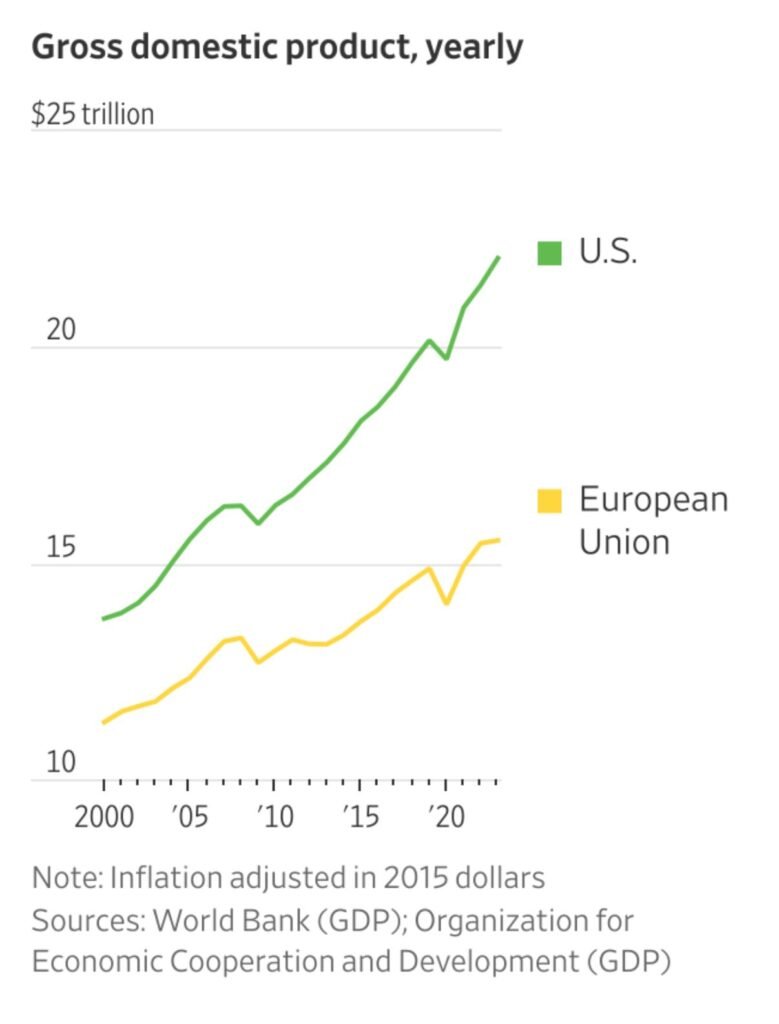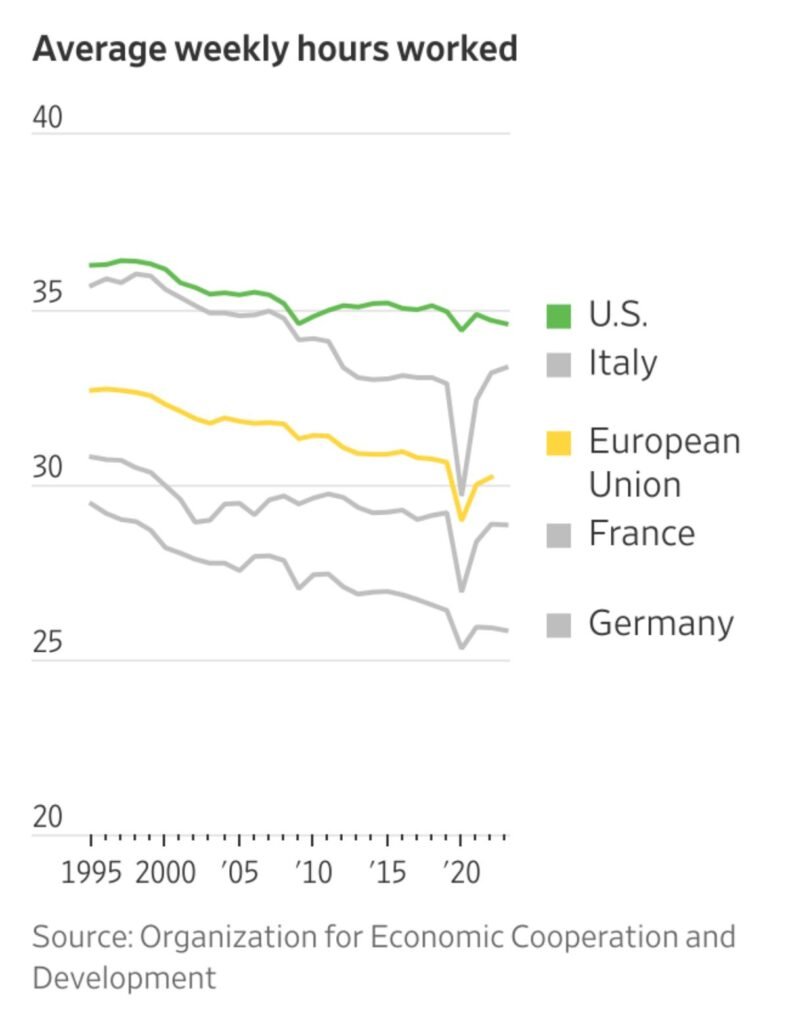The Productivity Paradox: Comparing GDP and Work Hours in the U.S. and Europe
Over the past two decades, the economic trajectories of the United States and the European Union have diverged significantly, as illustrated by their gross domestic product (GDP) and average weekly work hours. Data from the World Bank and the Organization for Economic Cooperation and Development (OECD) reveals a striking contrast: while the U.S. has seen a steady rise in GDP, the European Union has experienced more modest growth. Meanwhile, work hours across both regions have generally declined, raising questions about productivity, work life balance, and economic priorities.

From 2000 to 2020, the U.S. GDP, adjusted for inflation in 2015 dollars, climbed from around $13 trillion to over $20 trillion, reflecting robust economic growth despite occasional dips, such as during the 2008 financial crisis. The European Union, however, saw its GDP hover between $10 trillion and $15 trillion over the same period, with more pronounced fluctuations. For instance, the EU experienced a noticeable dip around 2010, likely due to the Eurozone crisis, before recovering modestly. This disparity suggests that the U.S. economy has been more resilient and dynamic, potentially driven by factors like technological innovation, a larger services sector, and more flexible labor markets.
Yet, the story of work hours complicates this narrative. Between 1995 and 2020, the average weekly hours worked in the U.S. remained relatively stable, fluctuating around 35 hours per week. In contrast, the European Union saw a gradual decline from about 34 hours to 30 hours per week, with countries like France and Germany dropping even lower, to around 27 hours by 2020. Italy, while following a similar downward trend, consistently worked slightly more than the EU average, hovering around 31 hours. This reduction in work hours across Europe aligns with policies promoting shorter workweeks, stronger labor protections, and a cultural emphasis on work life balance, such as France’s 35 hour workweek law introduced in 2000.
The juxtaposition of these trends highlights a productivity paradox. The U.S. has achieved higher GDP growth while maintaining longer work hours, suggesting that Americans are working harder to drive economic output. In contrast, the EU has prioritized shorter work hours, yet its GDP growth has lagged. This raises the question: are Europeans working smarter, or is the U.S. simply outpacing them in raw productivity? One possible explanation lies in labor productivity per hour, which tends to be higher in countries like Germany and France due to greater investment in technology and education. However, the U.S. compensates with a larger workforce and longer hours, amplifying its total economic output.

As we move into 2025, these trends underscore a broader debate about the future of work. The U.S. model of longer hours and higher GDP growth may appeal to those prioritizing economic dominance, but it often comes at the cost of worker well being. Meanwhile, the European approach offers a more balanced lifestyle, though it may struggle to keep pace with global economic competition. Policymakers on both sides of the Atlantic could learn from each other, perhaps the U.S. could adopt more worker friendly policies, while the EU might explore ways to boost economic dynamism without sacrificing its social model. The data is clear: growth and hours worked are not the whole story, productivity, innovation, and quality of life must also shape the conversation.
Responses